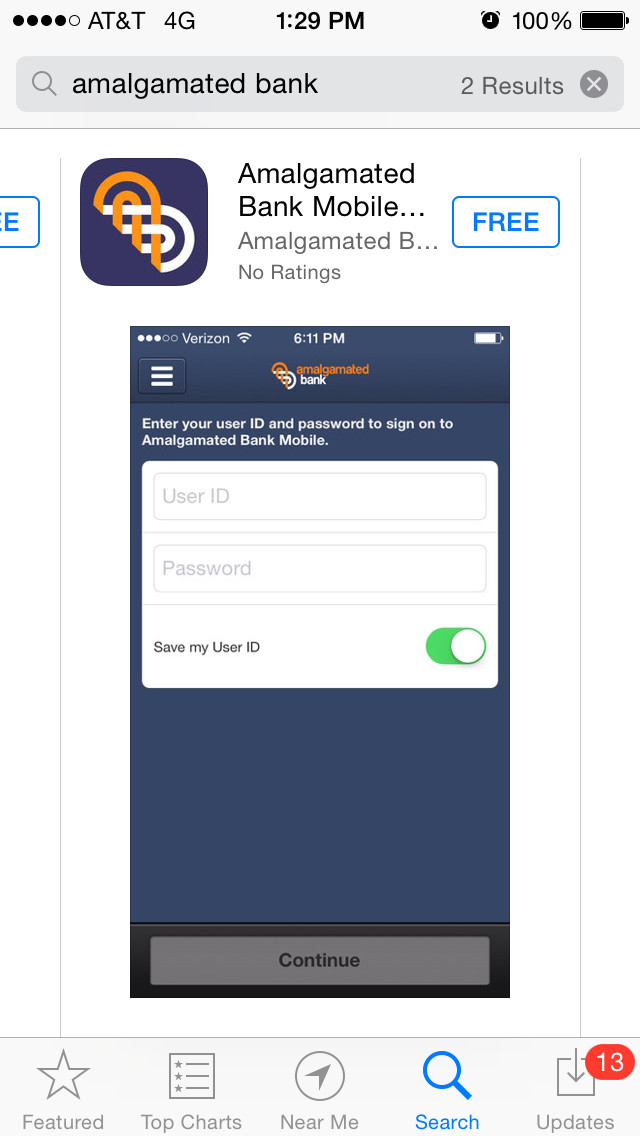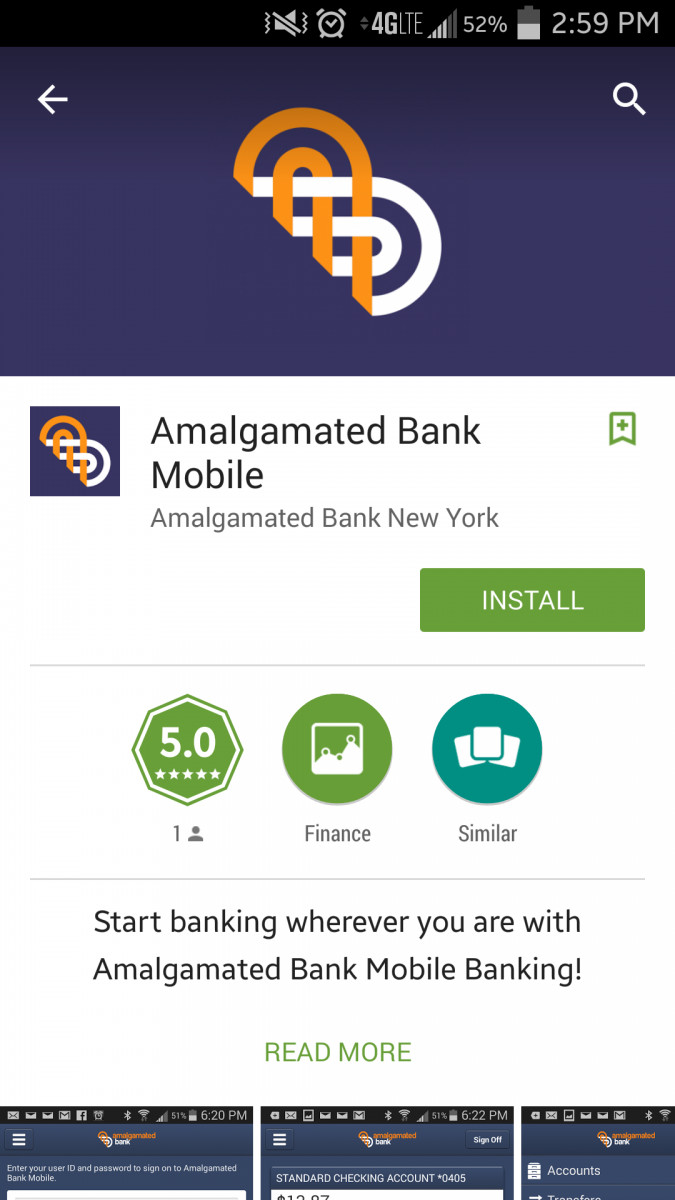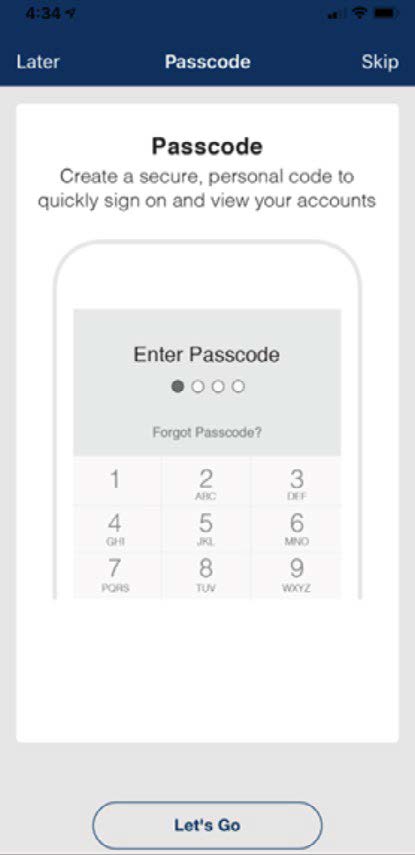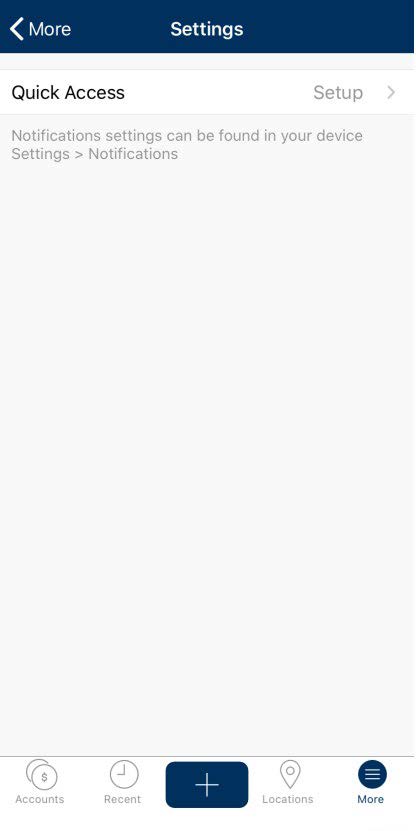Last updated: November 15, 2023
Amalgamated Bank (the “Bank”, “we”, “our”, or “us”) understands the importance of privacy, and we respect and take responsibility for protecting personal and financial information. This Online Privacy Policy (“Policy”) describes the type of information we collect from visitors to our online banking and mobile websites and mobile applications (collectively, referred to as the “Site”).
Scope of This Notice
As a bank, we are subject to a federal law (known as the Gramm-Leach-Bliley Act (GLBA) with regard to the processing of the personal information of our customers and consumers. As such, our main privacy policy explains our practices with regard to the personal information of our customers and consumers. In this context, “customers” refers to individuals who have a continuing relationship with us. “Consumers” refers to an individual who has applied for or obtained a financial product or service from us for personal, family, or household purposes. Customers and consumers may also refer to our main privacy policy for more information about their options for limiting the sharing of their personal information.
In addition, this Privacy Policy does not cover our processing of personal information of employees, applicants for employment, former employees, or emergency contacts or benefits beneficiaries of employees, former employees, or applicants. Likewise, this Privacy Policy does not cover our processing of personal information of individuals acting in the context of their role as an employee, agent, or other representative of another business. Those individuals may contact us to receive a copy of the privacy notice applicable to them.
Accordingly, this Online Privacy Policy addresses our processing of the personal information of Site visitors other than the groups described above.
We will update this notice from time to time, or as our privacy practices change, to ensure it accurately describes how we use personal information. When we do so, we will update the dates above. We recommend that you review this Online Privacy Policy from time to time for the latest information. If we change our practices in a material way, we will provide appropriate notice to you, usually through an e-mail message or through a banner or pop-up on our Site.
1. How We Use and Share Personal Information
We use and share personal information (information relating to an identified or identifiable person or household) as described below. Please also refer to the content following the table for more information about certain terms used in the table.
| Categories of individuals | Categories of personal information | Purposes | Methods of collection | Categories of third-party recipients (see below) |
| All Site users | - Activity information (see below)
- Interest information
| - Service analysis (see below)
- Personalization
- Network advertising
| - Directly from individual
- Indirectly by monitoring individual’s activities or behavior
| - Analytics providers
- Advertising networks
|
| Subscribers to our e-mail updates | | - To provide updates about our business, products, and services
| | |
| E-mail correspondents | - Name and contact information, including e-mail address
- Topic
- Subject
- Message
| - To respond to e-mail correspondence
| | |
| Text chat users | - Name and contact information
- Contents of chat
| - To provide assistance to individuals via online chat
| | |
Activity Information. When you visit our Site, we collect information such as the IP address of the device you are using to connect to the Internet, the browser and version being used, the type of operating system you have, which site you came from, pages and content viewed, time and duration of visits, and whether advertisements were clicked. This information helps us provide you with a more effective online experience. To facilitate the collection of this information we may use cookies, pixel tags, or other similar technologies.
Service Analysis. We use the term “Service Analysis” to refer to a variety of closely related purposes, including for security purposes, to understand how individuals use our Site, to detect improper usage, to identify technical problems with the Site, to improve the Site’s design and functionality, to understand the demographics of our Site’s users, and to evaluate the effectiveness of the Site.
Please note that, in addition to using personal information as reflected in the table above, we may also use personal information to defend or assert legal claims with respect to which the personal information is relevant.
2. Personal Information Disclosure and Sharing
In addition to the sharing with the third parties described in the table above, we may also share your information with:
- Service providers. We share your personal information with third parties that provide services to us. We engage these kinds of third parties with contracts that require them to use your personal information only for the purpose of delivering the services for which we have engaged the third-party and as required by law. These kinds of third parties may provide business, professional, administrative, or technical support functions for us, such as payment processing, billing, data storage, quality assurance, and marketing.
- Legal compliance recipients. We disclose personal information to the courts, the government, law enforcement agencies, litigants, and similar recipients when required by law.
- Successors. We may disclose personal information associated with a part of our business to a buyer, potential buyer, or other successor to our business.
We also may disclose personal information to third parties with your consent or at your direction.
3. Personal Information Security
Protecting your personal information is important to us.
To protect your personal information, we have enacted physical, electronic, and procedural safeguards that meet applicable law. These measures include a wide variety of computer safeguards as well as secured files and buildings.
In addition, this Online Privacy Policy, along with our main privacy policy, serves as a standard for all Bank employees for collection, use, retention, and security of Personal Information.
In addition to the steps that we take to protect your information, there are also steps you can take to protect yourself. Always protect your passwords and other confidential information from disclosure to others. Be sure the computers or mobile devices you use to access our Site have up-to-date security software. Use programs that scan for viruses and other malicious software that could steal your passwords or other confidential information. Select strong passwords that are difficult to guess by trial and error. For more information on data security and protecting your data, please visit the Information Security Center on our Site.
4. Retention of Personal Information.
We retain personal information for as long as is necessary for the purposes set out in this Online Privacy Policy, or for so long as is required by law. What is necessary depends on the context and purpose of processing. We generally consider the following factors when we determine how long to retain personal information:
- Retention periods established under applicable law
- Industry best practices
- Whether the purpose of processing is reasonably likely to justify further processing
- Risks to individual privacy in continued processing
- Applicable data protection impact assessment
- IT systems design considerations/limitations
- The costs associated with continued processing, retention, and deletion
5. Analytics
Our Site uses Google Analytics for service analysis purposes. Although we may share personal information with Google that allows us to understand how you use our website over time, at no time do we send your name, e-mail address, phone number, account number, or social security number with Google Analytics. (For more information about how Google collects and processes information gathered from our Site, visit www.google.com/policies/privacy/partners/).
6. Network Advertising
We advertise our products and services on our Site as well as on unaffiliated websites using third-party advertising providers and media companies to conduct these activities on our behalf. In an effort to deliver relevant digital advertising to you, we may use cookies and related technology to track your interests and the digital advertising performance of our ads on our Site and other websites. Our advertising providers may also use behavioral information such as how you browse websites to determine which of our ads may be of interest to you.
Please note that we do not control third-party websites where our ads may be placed. You should review such third-party websites for information on their privacy practices.
7. Children’s Privacy
Our Site is not intended for children under the age of 13 and should not be used by them. Please do not access or use our Site if you are under 13 years of age.
8. Your California Privacy Rights
As a Bank, our personal information processing practices are subject to federal law and California’s Financial Information Privacy Act (CFIPA). However, to the extent we process personal information that is not subject to these laws, and you are a California resident, you may have rights relating to your personal information under the California Consumer Privacy Act (CCPA).
Under the CCPA, selling the personal data of people aged under 16 requires active, advance consent. This works on an opt-in basis. If you know the person is aged between 13 and 16, you must get their opt-in consent before selling or sharing their personal information with Google Analytics or your ad networks. If you know the person is aged under 13, you must get consent from their parent or guardian.
A. Collection of Personal Information
The following table shows the categories of personal information we have collected in the last 12 months.
| Category | Collected |
| A. Identifiers. | Yes |
| B. Personal information categories listed in the California Customer Records statute (Cal. Civ. Code § 1798.80(e)). | Yes |
| C. Protected classification characteristics under California or federal law. | No |
| D. Commercial information. | Yes |
| E. Biometric information. | No |
| F. Internet or other similar network activity. | Yes |
| G. Geolocation data. | No |
| H. Sensory data. | No |
| I. Professional or employment-related information. | No |
| J. Non-public education information | No |
| K. Inferences drawn from other personal information. | Yes |
B. Disclosure of Personal Information
The following table lists (1) the categories of personal information that we have sold or shared information for cross-contextual behavioral advertising purposes in the past twelve months or (2) shared with third parties for our business purposes in the past twelve months.
| Category | If sold or shared, Categories of Recipients | If sold or shared, Categories of Recipients |
| A. Identifiers. | Third-party analytics providers and network advertisers | Service providers |
| B. Personal information categories listed in the California Customer Records statute (Cal. Civ. Code § 1798.80(e)). | Third-party analytics providers and network advertisers | Service providers |
| C. Protected classification characteristics under California or federal law. | Not sold | Service providers |
| D. Commercial information. | Not sold | Service providers |
| E. Biometric information. | Not sold | Service providers |
| F. Internet or other similar network activity. | Third-party analytics providers and network advertisers | Service providers |
| G. Geolocation data. | Not sold | No disclosed |
| H. Sensory data. | Not sold | Service providers |
| I. Professional or employment-related information. | Not sold | Service providers |
| J. Non-public education information | Not sold | Service providers |
| K. Inferences drawn from other personal information. | Not sold | Service providers |
Please refer to section 2, above, for more information on our privacy practices with regard to service providers.
C. Your Rights
If you are a California resident, California law permits you to request that we disclose certain information about our collection and use of your personal information including:
- the “right to know,” meaning the right to request any or all of the following:
- the specific pieces of personal information we collected about you;
- the categories of personal information we collected;
- the categories of sources used to collect the personal information;
- the business or commercial purposes for collecting your personal information; and
- the categories of third parties with whom we have shared your personal information
- the right to request deletion of your personal information that we collected
- the right to have someone you authorize make a request on your behalf
- the right to opt-out of “sale” (as that term is defined in the CCPA) or the sharing of personal information for cross-contextual behavioral advertising purposes
- the right to make a request for the correction of errors or inaccuracies in your personal information
- the right to restrict the processing of confidential personal information (please note, however, that we do not collect or process confidential personal information except with respect to consumers, customers, employees, applicants, and former employees)
- the right not to be discriminated against for exercising any of these rights.
1. Exercising Your Rights
To exercise your rights to know (or for data portability), to deletion, or correction described above, please submit a request by contacting us through any of the means outlined below.
Only you, or someone legally authorized to act on your behalf, may make a request related to your personal information. We will verify that any requests from persons other than you have your legal authorization. You may also make a request on behalf of your child.
Your request must:
- Include your first and last name, e-mail address, telephone number, and a description of your request;
- Provide sufficient information that allows us to reasonably verify you are the person about whom we collected personal information or an authorized representative; and
- Describe your request with sufficient detail that allows us to properly understand, evaluate, and respond to it.
You do not need to create an account with us to submit a request to know or delete, but we consider requests made through your password-protected account sufficiently verified when the request relates to personal information associated with that specific account.
2. Opting out of the sale or sharing of personal information
If you are California resident age 16 or older, you have the right to direct us to not sell or share your personal information at any time (the “right to opt-out”). You (or your authorized representative) may exercise this right by visiting our Your Privacy Rights page or by activating the Global Privacy Control (“GPC”) signal in your web browser.
You do not need to create an account with us to exercise your opt-out rights. We will only use personal information provided in an opt-out request to process your request. Please note that opt-outs other than GPC may work via cookies, so if you delete or block cookies, use a different device, or change web browsers, you will need to opt out again. Please note that even if you opt out of targeted advertising, you may still receive non-targeted advertisements for our products or services through our Site or other websites.
3. Restricting our use of confidential personal information
Although you have the right to request that we restrict our processing of confidential personal information to only that which is necessary to deliver our products and services to you, we already limit our processing of confidential personal information in this way. If you have any questions or requests relating to this topic, please contact us at the information provided below.
4. Shine the Light
California’s “Shine the Light” law, Cal. Civ. Code § 1798.83, entitles California residents to request certain information regarding our disclosure of personal information to third parties for their direct marketing purposes. Any inquiries regarding personal information sharing with third parties may be directed to us at the contact information set forth below.
9. Your Privacy Rights
As a Bank, our personal information processing practices are subject to federal law. However, to the extent we process personal information that is not subject to federal law, you may have rights relating to your personal information under the law of the state in which you live. To exercise your state-law rights, please submit a request by contacting us through any of the means outlined below.
Only you, or someone legally authorized to act on your behalf, may make a request related to your personal information. We will verify that any requests from persons other than you have your legal authorization. You may also make a request on behalf of your child.
Your request must:
- Include your first and last name, e-mail address, telephone number, and a description of your request;
- Provide sufficient information that allows us to reasonably verify you are the person about whom we collected personal information or an authorized representative; and
- Describe your request with sufficient detail that allows us to properly understand, evaluate, and respond to it.
We do not respond to “do not track” signals transmitted by web browsers. However, residents of certain states may opt out of the processing of their personal information for the purposes of data sales or targeted advertising. Such individuals may exercise those rights here or by activating the Global Privacy Control (“GPC”) signal in their web browser. Please note that opt-outs other than GPC may work via cookies, so if you delete or block cookies, use a different device, or change web browsers, you will need to opt out again. Please note that even if you opt out of targeted advertising, you may still receive non-targeted advertisements for our products or services through our Site or other websites.
Appeal process. Residents of certain states also have the right to appeal our decision with respect to the resident’s request to exercise their legal rights with regard to their personal information. To submit such an appeal, you may contact us using the contact information below. You must include sufficient information to allow us to reasonably verify your identify, reference the date and time of your previous request to exercise your legal rights, and explain why you believe our decision was in error. We will ordinarily respond to your appeal in accord with the timelines set forth in the applicable state’s law.
10. Social Media
To promote awareness and collaboration among our customers and community members, the Bank uses social media platforms such as Facebook®, Twitter®, Instagram®, and LinkedIn®. Any information that you post and make available on those social media platforms (including any personal information, pictures, or comments) is subject to the Terms of Use and Privacy Policies of those platforms. Please review the terms of those sites i to understand your rights and obligations with respect to information you post to those sites.
11. Contacting Us
To exercise your rights, submit an appeal, or for privacy-related inquiries, please use our data subject portal or contact us by phone at 800-662-0860 or email at ab-online@amalgamatedbank.com.








